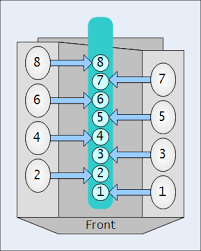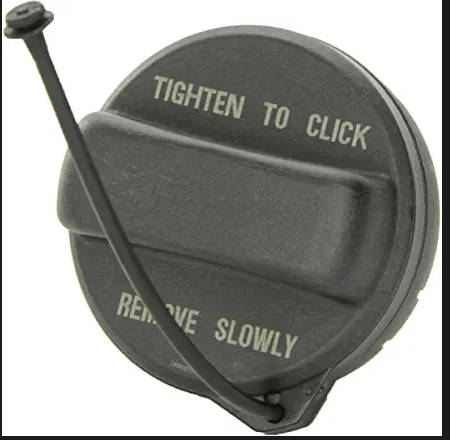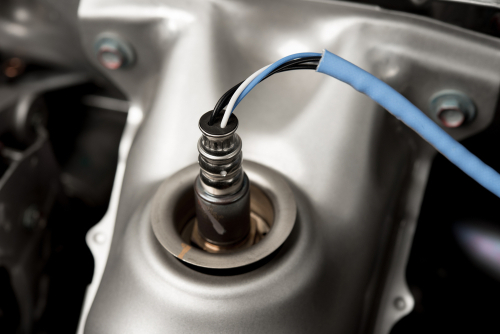P2187 is a DTC code that can occur in the Hyundai Santa Fe. It indicates the air fuel mixture is too lean at idle.
The technical definition for P2187 “System Too Lean at Idle: Bank 1”. The code is thrown after your Santa Fe’s oxygen sensor on Bank 1 (usually sensor 1) has detected that the air fuel mixture is too lean.
The ideal air/fuel mixture is 14.7 parts air to 1 part fuel (14.7:1) When the air fuel mixture is too lean, it means that your car or truck has too much air for the amount of fuel present. This can cause it to idle poorly, depending on how off the air fuel mixture is.
Bank 1 Location: Hyundai Santa Fe

Bank one is the part of the engine with the first cylinder. You’ll need to know how to properly identify it in order to diagnose P2187 in your Santa Fe.
On inline engines, you do not need to know about any of this, as there is only one bank to deal with. But, on V6 and V8 engines, there are two cylinder heads, and therefore two banks.
If your Santa Fe has two cylinder heads, here’s how to tell where bank 2 is.
Santa Fe: P2187 Symptoms

Here are some of the most common symptoms associated with P2187. They are going to vary in severity depending on how far off the air fuel mixture is.
- Rough Idle
- Hard/No Start
- Misfiring
- Hissing/Whistling coming from the engine bay (this indicates a vacuum leak is the cause)
- Gas Smell
P2187 Causes: Hyundai Santa Fe
There are a number of things that can make your Santa Fe’s engine run too lean at idle and cause P2187. Most of them are easy enough to check, but there are a lot of them. Here are some of the most common ones.
- Vacuum Leak
- Exhaust Leak
- Fuel Injection Leak
- Fuel Pressure Regulator
- Fuel Pressure Low (clogged filter or bad pump)
- Bad MAF sensor
- Bad Gas Cap
- EVAP Purge Valve
P2187 Diagnosis: Hyundai Santa Fe
Here are some steps that you can use to diagnose P2187 in your Santa Fe at home:
Check for Other Codes
Hopefully, there were other codes that were thrown with P2187. If there are, it is a good thing, because it can make diagnosing it a whole lot easier. For instance, if it’s an oxygen sensor related code, start with the oxygen sensors. If it’s an EVAP code, start with the EVAP system.
Super Easy Stuff

- Gas Cap– Check to see if it is snugged down all of the way. If you’ve gotten the check fuel cap warning a few times before this code was thrown, that indicates that a new fuel cap might fix the problem, or there is an EVAP leak.
- Oil Cap– P2187 has been known to occur when there is no oil cap present, or if it is loose. Take a second to check it real quick.
- Smell for Gas– If you smell gas around the fuel injectors, that means that a fuel injector could be leaking.
- Listen for a Hiss– A hissing or whistle sound coming from the engine indicates a vacuum leak.
Look for Leaks
A vacuum leak allows more air to enter the intake manifold, this air is unmetered, which would mean more air in the combustion chamber than the PCM thinks is going in there. The O2 sensors pick up the air fuel mixture at idle and P2187 is triggered.
- Check all of the hoses coming to and from the intake manifold for rot, damage, and loose connections.
- Make sure the MAF sensor (if applicable) does not have leaks around it.
- Look at the PCV valve and hose to see if they are leaking.
You can use carb cleaner to spray around these places. If the engine RPM increases, you’ve found the vacuum leak and the likely cause of P2187.
Fuel System
If there isn’t enough fuel pressure, there won’t be enough fuel in the air fuel mixture, and it’ll run lean. There are several components that can cause a fuel pressure to drop.
- Bad Fuel Filter
- Bad Fuel Pump
- Clogged/Leaking Injector (very likely on a V6 or V8 where P2187 “Bank 1” is thrown but P2189 “Bank 2” is not thrown)
A bad fuel pump or fuel filter will produce lower fuel pressure.
Here’s how to test fuel pressure.
Step 5: Sensors

If there doesn’t seem to be anything wrong with the vehicle physically, it’s likely one of the sensors that are at fault.
- A bad oxygen sensor would give a false air/fuel reading and trigger P2187.
- A bad MAF or MAP sensor will not properly read the air entering the engine, which could cause it to go too lean or rich. In this case though, it’s too lean.
P2187 Conclusion
As you can see, there are just a ton of issues that can cause P2187 in your Hyundai Santa Fe. It can be a real challenge to lock down what is causing this code.

